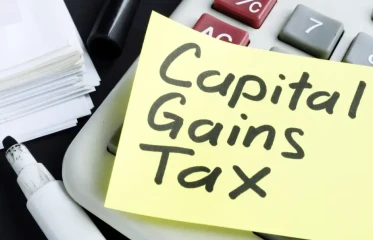10 best practices for keeping track of employees' time
Employee timekeeping is a real, time-consuming struggle with plenty of room for mishaps, especially if there are no right procedures and equipment.
While you certainly have faith in your employees, even the greatest employees may sneak in a few minutes here and there if you don't have a solid method for tracking employee time. It seems innocuous, no?
You're looking at a significant amount of money when you multiply those few minutes by your entire workforce and the number of shifts they work. Time theft, buddy punching, and costly mistakes are all possible when doing timekeeping using just pen and paper or other archaic methods.
Fortunately, we’ve got you covered with staff timekeeping best practices to guarantee that your time tracking is as precise and effective as possible.
1. Keep accurate records
Every timekeeping effort starts with accurate time and attendance data. It feels like you're trying to solve the issue in the dark without actually knowing who is on time, who is late, how frequently, and how often.
Put this fundamental information in place from the start by using time and attendance software. You'll make any new timekeeping initiative much easier to handle if you know you're documenting attendance data in a coherent and accurate form.
2. Establish a direct point of contact
With a clear management structure, reporting on attendance problems is simple.
Whether it's per shift, per location, or per department, assign someone the role of timekeeping. Indicate that they should work with employees to find solutions to problems affecting their attendance instead of reprimanding latecomers.
Employees can bring up and address issues that could otherwise cause them to be late with the help of an open-door policy.
3. Monitor data constantly
Timekeeping via manual entry is prone to mishaps. Employees are more likely to forget their arrival or departure times the longer you leave gaps in the data. When possible, you should gather such data daily, or at the very least every week, if your organisation is still using manual timecards.
If you've switched from manual processes to a software system, don't be too complacent. Make sure you generate attendance reports on a regular basis, ideally once per week. The sooner an issue is identified, the quicker it can be resolved.
4. Keep records of the hours worked
Every employee timekeeping initiative is built on accurate data regarding arrival and departure times.
To get it correctly, you have to record work hours to the nearest minute rather than estimating them. You also have to record time as it is worked and avoid depending on your or your employees' recalls.
You and your team can effortlessly record accurate work hours in real-time using time and attendance software. You can also manage and evaluate data from it conveniently.
5. Set an example
It always starts at the top if you want to establish a workplace culture that values timekeeping. Set the same standards for yourself, managers, and even executives as you would for regular employees. Make it apparent that everyone is responsible for arriving at work on time.
Don’t be surprised if employees start to regard punctual attendance as a changing target and follow suit if management frequently arrives at 9:30 am. Always set a good example as their employer.
6. Make use of automated scheduling
People who are trying to fit their lifestyles around unpredictable working hours tend to have tardiness issues.
That said, employees will have time to plan when schedules are set two weeks in advance. Moreover, they are less likely to be late to work if you reduce the occurrence of last-minute issues like urgent child care emergencies.
7. Identify problematic behaviours
Tracking data consistently enables you to identify problematic patterns affecting your company's growth.
Give a thorough view of what your regular time and attendance data cycles are telling about your organisation once it is set in place. Check for more persistent, in-depth patterns tied to specific managers, places, or shifts. Areas of poor timekeeping may have an easy fix, but you can't solve them if you don't know they exist.

8. Automate and introduce breaks
By providing breaks, employees will be less likely to arrive late. Both employees and you benefit from breaks and paid meal times. Employees who take lunch breaks are more committed, engaged, and productive.
You should be able to automate these breaks by sending staff alerts when it's break time using good employee management software.
Contrary to non-automated systems where timed breaks often go unnoticed, these reminders urge employees to actually take their breaks. Employees will value their time given to the company if they believe it is also valued by the company, per se.
When they are aware that they will have time later in the day to grab a meal or make an important phone call, they are less likely to squeeze such activities in before work, causing them to arrive late.
9. Permit shift swaps
Systematic shift swapping allows issues that may have led to tardiness or a no-show to be resolved between staff before situations further escalate.
Allow workers to swap shifts with their colleagues if they won't be able to make it. The proposed swap can be approved by managers with just a tap of the finger if you use an app-based time and attendance software, saving you time and problems.
10. Establish and acknowledge goals
It can be viewed as a false economy if you reward your employees for being at work. Why? Because you're basically paying them twice for performing their contractual obligations.
However, this doesn't imply that there aren't any effective methods to encourage regular attendance. Bonuses should be rewarded to teams rather than individuals to boost morale and optimise attendance and engagement.
Consider giving employees an early Friday off as a reward for punctual attendance over the week. You could also give them a modest reward, such as mentioning them in the business newsletter as a kudos for a job well done.
How RosterElf can help with employee timekeeping
With the help of RosterElf, an excellent employee timekeeping software solution, you can easily and accurately record, monitor, and manage the work hours of your employees from a desktop or mobile device.
Whether they are working at a desk or remotely via a mobile app, your employees will be able to clock in and out and automatically record their work hours with the completely automated time clock feature. Who has clocked in, when, and from where is all clearly and completely visible to you in real-time.
Time to say goodbye to time theft and buddy punching. No need to collect paper timesheets or estimate hours because all tracked hours are automatically organised and available for review on a digital timesheet. This gives you complete accuracy and transparency.
You can use one of RosterElf’s payroll integrations or export the timesheets directly to your payroll program.
What are you waiting for? Time to take your rostering and payroll game to the next level and boost your business’ performance. Contact us now, and our team will be more than happy to assist you.
To get a clearer view of how our app works, enjoy 15-day access to our tool for free!



